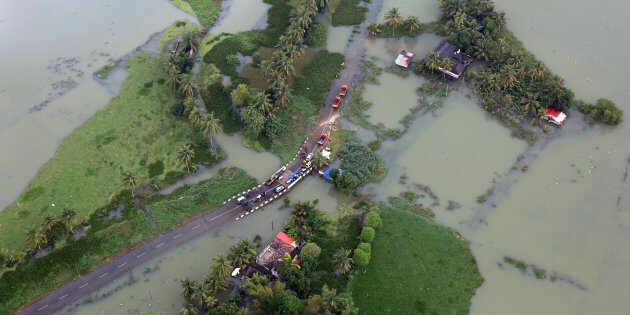
There is no way to describe the depth of the calamity that Kerala faced just now. Twelve of its fourteen districts comprising of 88% of the states’ areas were devastated in just five days. Nearly seven lakh people were brought to the 5532 relief camps across the state in what is said to be the biggest natural disaster since 1924.
Despite the colossal economic loss, Kerala was able to restrict the human loss to below 350. Often, in India, the depth of a natural disaster is used to be measured from the extent of human loss. In the case of the Kerala flood, the human loss doesn’t tell anything about the severity of the disaster. Rather it pronounces how effective was the management of the disaster.
When the success of limiting human loss adequately explains how the Kerala flood creates a new chapter in disaster management; what factors have contributed to it?
There are three important ones – first is the efficiency shown by an alert administration, second is the quick and sophisticated people participation in rescue and third – timely intervention of the disaster management teams from the centre (including the NDRF, the Army, Navy etc.,) and other states (Odisha, Tamil Nadu etc.,).
The agility of the administration was visible even before the heavy cloud made its appearance. When people were walking on the banks of river Meenachil in central Travancore, at the beginning of the heavy rains on 14th august evening, police were tying red ribbons as a warning on the sides of river.
There was no sign of a big flood though the river was flowing full.
Usual alerts about the coming rainy days were provided through media though such warning were common after the ‘Okhi’ cyclones couple of months back. Each district administration was on alert mode since most of the 41 dams in the state were full. They have made plans for rehabilitation of the people in case dams overflows during heavy rains.
The administration looked like a sprinter on the starting block.
Still, a magnitude of what followed was never thought of.
On the next day evening, there was no road on the banks of Meenachil; but only the river. The river that joins the Vembanad Lake had already crossed into nearby towns.
If heavy rains produced landslides in the hilly areas, there were intense flooding int the coastal areas. Not even the midlands were spared. For instance, the unexpected flooding of two midland towns – Chengannur and Chalakkudy has brought the people and the administration off the guard.
If the administrative machinery was failed at any place, it was at Cengannur as the authorities not expected a severe crisis in such midlands.
Throughout, the administration tried to catch up with the demands of the people in crisis management. Given the social consciousness of the people, and potential for electoral disaster in case of mismanagement, the governance level was good given the
The next factor is the participation and organization skill and anticipation showed by the public in rescue operations. People’s mobilizations for rescue and rehabilitation occurred very quickly. Identification of trapped people, arrangement of local rescue teams, supporting the NDR and other rescue operations with land maps, centralized collection and systematic distribution of the relief materials-all facilitated the management of the crisis.
A fine example was the rescue operations made by the fisherfolk in midlands. The sons of the seas reached the flooded areas with fishing boats loaded in trucks. Nearly 500 fishing boats were brought by the fishermen in all the seven districts spending their own diesel and other expenses before the deployment of the Navy.
The third factor that led to the successful disaster management is even more important – the high-quality involvement of the various disaster management teams. The National Disaster Management Response Force, Navy, Air-Force, Army, rescue teams from Odisha and other states… all have worked hard during heavy rains to minimize the casualties.
The National Disaster Response Force (NDRF), formed in 2006, made its biggest rescue operations in its history by sending 58 teams.
“This is the highest ever deployment of NDRF in a single state since its raising (in 2006) and hence this becomes this becomes our biggest-ever disaster response operation till date,” a spoke person of the NDRF said.
As the rescue and relief are going on; the state is moving forward to meet the next phase of the disaster management. What is worrying is that the economic loss is gigantic, and it may take several years for Kerala to rebuild its economy.
*********











